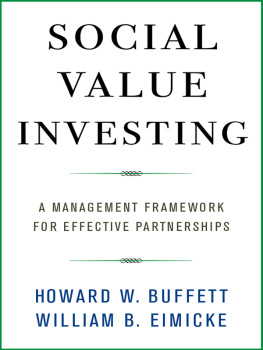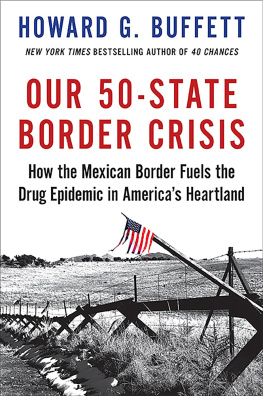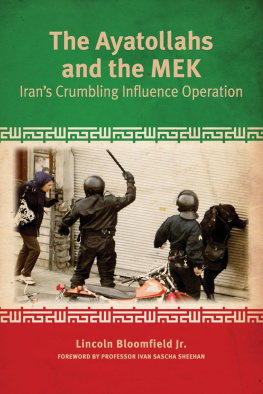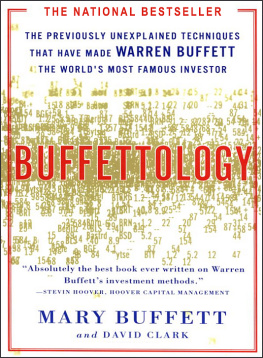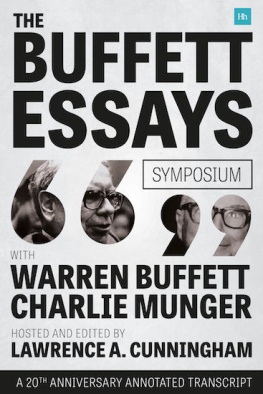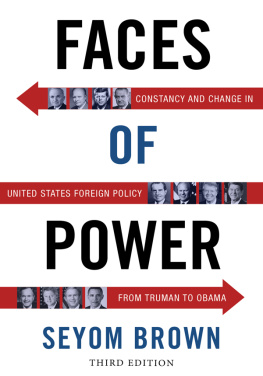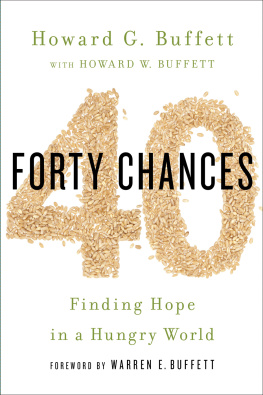Table of Contents
SOCIAL VALUE INVESTING
Columbia University Press
Publishers Since 1893
New York Chichester, West Sussex
cup.columbia.edu
Copyright 2018 Howard W. Buffett and William B. Eimicke
Impact Rate of Return, iRR, and Social Value Investing are federally registered trademarks of Global Impact LLC.
All rights reserved.
E-ISBN 978-0-231-54445-0
Library of Congress Cataloging-in-Publication Data
Names: Buffett, Howard W., 1983 author. | Eimicke, William B., author.
Title: Social value investing : a management framework for effective
partnerships / Howard W. Buffett and William B. Eimicke.
Description: New York : Columbia University Press, [2018] | Includes bibliographical references and index.
Identifiers: LCCN 2017061568 (print) | LCCN 2018001947 (ebook) | ISBN 9780231544450 (ebook) | ISBN 9780231182904 (cloth : alk. paper)
Subjects: LCSH: Public-private sector cooperation.
Classification: LCC HD3871 (ebook) | LCC HD3871 .E36 2018 (print) | DDC 658/.046dc23
LC record available at https://lccn.loc.gov/2017061568
A Columbia University Press E-book.
CUP would be pleased to hear about your reading experience with this e-book at .
Cover design: Noah Arlow
Some images have been enhanced for appearance, for black and white, or in accordance with nondisclosure agreements.
HWB
To Lili, for her endless support and love; and Thomas, for the bright future that lies ahead.
WBE
To Karen, Annemarie, Balsam, and Sugar Ray.
Contents
By Warren E. Buffett
By Howard W. Buffett and William B. Eimicke
By Howard W. Buffett and William B. Eimicke
By Howard W. Buffett
By William B. Eimicke
By Howard W. Buffett
By William B. Eimicke
By Howard W. Buffett
By Howard W. Buffett
By Howard W. Buffett
By William B. Eimicke
By Howard W. Buffett
By William B. Eimicke
By Howard W. Buffett
By William B. Eimicke
By Howard W. Buffett and William B. Eimicke
WARREN E. BUFFETT
I am an optimist, a very realistic optimist. You can gain a sense of this by reading Berkshires annual reports and the op-eds I have written over the years. For one thing, I believe that living standards around the world will continue improving far into the future, as they have done in America since our forefathers discovered the countrys secret sauce.
America has led the way with an innovative market system built upon a rule of law and equality of opportunity. This combination has delivered incredible growth during my lifetimereal GDP per capita has increased sixfold since my birth in 1930. And our economy will continue to benefit from a steady unleashing of human potential.
This is never more evident than when I meet with university students. Every year, groups from forty colleges and universities visit with me in Omaha to talk about the world they will inherit and improve. My message is consistent: Despite the difficulties we face, I am confident that their grandchildren will live in a world with far greater abundance than we have today. After we talk, I always come away feeling even more optimistic about the future.
For students like these, this book will be a helpful resource. It is grounded in a well-researched and tested approach, which will serve as a framework for partnership building. As you learn from the strategies pursued in these stories, youll discover just why Im so hopeful about the future. You will enjoy this book, and Ill bet you will be inspired, too, by its message of optimism and action.
HOWARD W. BUFFETT AND WILLIAM B. EIMICKE
In the middle of New York City is an open and expansive green spacesomething just as quintessentially Manhattan as its skyline. Every year Central Park welcomes more than forty million visitors from all over the world. Many think of it as a perfectly landscaped and pristinely maintained park, but not so long ago it was one of the most dangerous precincts in what was then the murder capital of the United States. In popular moviesThe Out of Towners, Annie Hall, Six Degrees of SeparationCentral Park symbolized why few people wanted to live in New York, why Europeans were advised not to visit, and why no street smart New Yorker ventured in after dark.
What changed? In the 1980s and 1990s, the neighboring community mobilized to create the Central Park Conservancy (CPC), recruited hundreds of volunteers and millions of dollars in support, hired highly qualified and passionate leaders and workers, and partnered with the city to run the park as if it were their own. The city government still owns the park, and it is open to all for freebut CPC runs it and raises the money to pay most of its operating and capital costs. This was an uncommon approach for its time, but this kind of creative cross-sector partnership is becoming more and more common. It didnt happen overnight, and it required constant, tireless, and visionary leadership from members of the conservancy and the city government. As good as this approach is, the partners are still trying to make it betterand they are helping other parks around the world replicate their success.
Similar to CPC, the nonprofit Friends of the High Line manages the park for the city and raises funds from donors to cover most of the rather substantial operating costs.
The Central Park Conservancy and Friends of the High Line are excellent illustrations of cross-sector partnerships: voluntary collaborations between organizations from the public, private, or philanthropic sectors that accomplish mutually agreed-upon goals. Today partnerships are delivering goods and services more efficiently and effectively, and with greater benefit to society, than one organization could ever achieve on its own. The two parks also show how partnerships between different sectorsin these cases, nonprofit organizations partnering with governmentoften are able to overcome the limitations that constrain organizations in any single sector. Private sector organizations also bring unique contributions to partnerships, generally driving better outcomes for programs that benefit the public in addition to their profit-making purpose.
We explore cross-sector partnerships as case studies at the School of International and Public Affairs at Columbia University, where we teach. Our graduate students are incredibly bright and diverse, and our alumni span more than 150 countries and come with professional backgrounds from government, for-profit, and philanthropic organizations. However, they all come together with a common goal of improving society. In our courses on effective public management, innovation, and philanthropy, we often find ourselves describing cross-sector partnerships as a more effective way to serve the public interest. From the innovative High Line urban park in the heart of New York City to the many other examples in this bookdigital transformation of government services in India, economic and agricultural revitalizations in Afghanistan, and so onorganizations from all three sectors are coming together in different ways to meet their individual organizations goals and serve the greater good.

